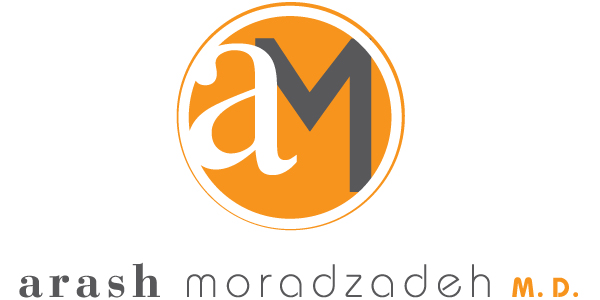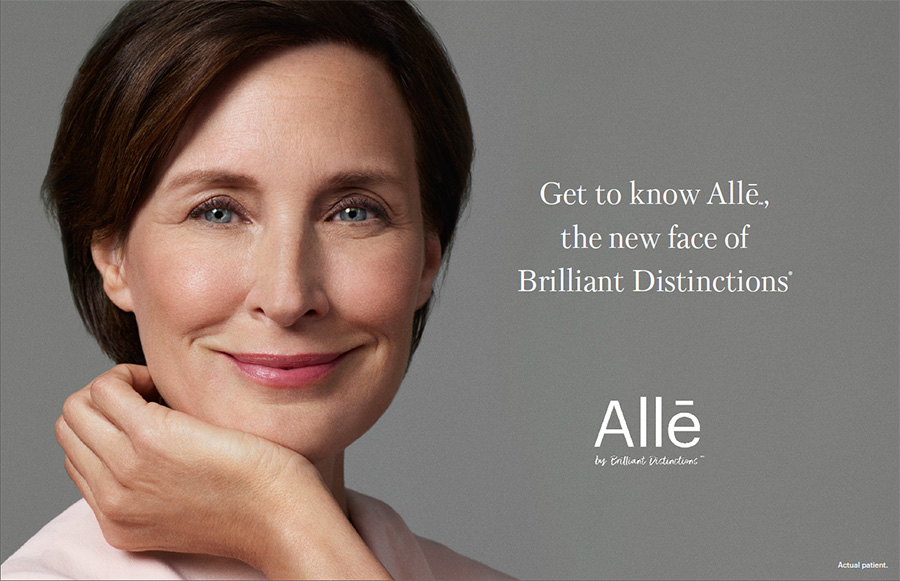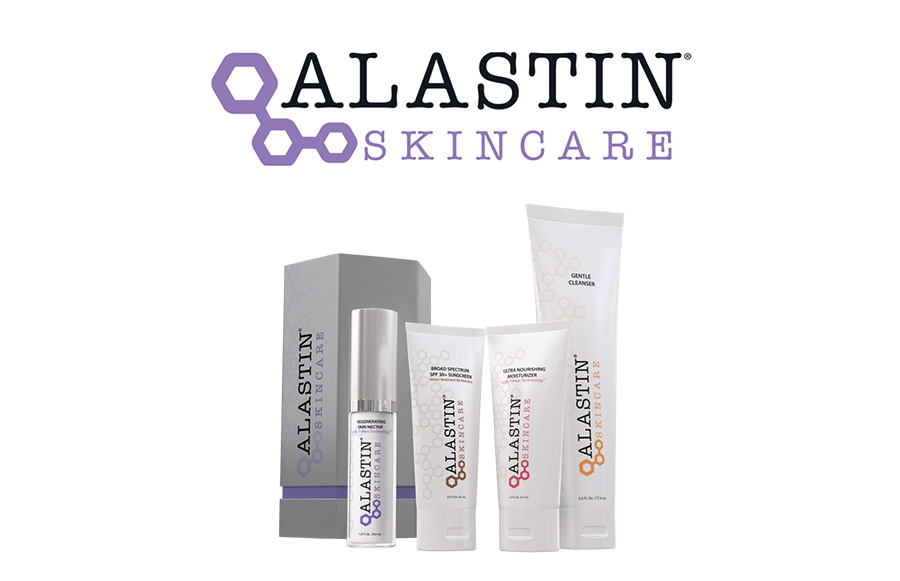Breathing through the nose should not feel like a struggle, but for many people, it is every day. Conditions like a deviated septum or internal scar tissue can interfere with airflow and make it harder to get air. Some of our patients are born with these structural issues, while others develop them from injury, previous surgery, or long-term inflammation.
We perform functional rhinoplasty at AM Facial Plastics to correct anatomical problems that restrict nasal breathing. This surgery can open your airway, ease congestion, and give you steady relief whether you are asleep or awake. We perform this surgery in Beverly Hills, CA, and we serve all of the surrounding areas.
What Is Functional Rhinoplasty?
Functional rhinoplasty is a surgical procedure that improves how air moves through your nose. It involves reshaping or reinforcing the internal structures that control airflow, such as the septum, nasal valves, and turbinates. In some cases, cartilage grafts may be used to support weak or collapsed areas that block the airway. This type of rhinoplasty is often used to correct breathing problems caused by a deviated septum, injury, or previous nasal surgery. While the nose’s appearance may change slightly as a result, the main goal is to restore function and make breathing feel natural again.
What Functional Rhinoplasty Treats
Internal and External Nasal Valve Collapse
The nasal valves are small but critical structures that regulate how much air flows through your nose. When either the internal or external valve weakens or narrows, it can feel like the airway is collapsing during each breath. Some people notice the blockage mostly during exercise or while lying down. We can reinforce the valve area using cartilage grafts or structural adjustments that hold the passage open and allow air to move freely again.
Deviated Septum
The septum divides the nose into two airways, and when it bends to one side, airflow becomes restricted. A deviation can be mild or severe, depending on how much it affects your breathing. In functional rhinoplasty, we straighten and reshape the septum to create a clearer, more balanced nasal passage.
Enlarged Turbinates
Turbinates are small, curved structures inside the nose that help warm and filter the air you breathe. When they become enlarged due to allergies or inflammation, they can block airflow and cause a feeling of constant congestion. Reducing the size of the turbinates while preserving their function can improve breathing without affecting the natural moisture or filtration process in your nose.
Post-Traumatic Deformities
Injuries to the nose can lead to both cosmetic and functional problems. Fractures or tissue displacement may cause the nasal structure to collapse inward or twist in a way that blocks air. Functional rhinoplasty allows us to reposition or rebuild those damaged areas to restore proper alignment and function.
Congenital or Structural Abnormalities
Some structural breathing issues begin at birth and worsen as the face develops. Narrow nasal passages, underdeveloped cartilage, or internal blockages can make nasal breathing difficult from an early age. We evaluate the specific shape and support of your nose to determine what needs to change in order to open the airway and improve function.
The Benefits of Functional Rhinoplasty
- Improved Nasal Airflow and Breathing Comfort: When the airway opens properly, each breath moves in and out with less resistance. You may find it easier to breathe during normal activity, without that constant feeling of blockage or pressure inside the nose.
- Better Sleep Quality: Uninterrupted nasal breathing supports deeper, more restful sleep. You may notice fewer nighttime awakenings, less snoring, and less daytime fatigue.
- Relief From Chronic Congestion: Surgery helps clear obstructions that cause stuffiness so you can stop relying on decongestants or nasal sprays.
- Better Exercise Tolerance: Physical activity requires efficient breathing, and a blocked nose can limit your ability to keep up. Once airflow improves, workouts may feel easier and less tiring.
- Improvements in Quality of Life and Energy: When you no longer struggle to breathe, other areas of life feel easier too. You may experience better focus, improved endurance, and fewer disruptions caused by poor sleep or constant congestion.
Functional vs. Cosmetic Rhinoplasty
Primary Goal
Functional rhinoplasty focuses on how your nose works, not how it looks. Cosmetic rhinoplasty reshapes the nose for aesthetic reasons, whether that means refining the bridge, tip, or overall profile. While some breathing problems can be addressed during cosmetic rhinoplasty, it is not the main goal.
Overlap
If you want both functional and cosmetic changes, we often address them during the same surgery. For example, if the nose shifts out of alignment after trauma, it may need structural repair for airflow and cosmetic adjustments for symmetry. Combining both goals in one procedure can reduce the need for multiple surgeries.
Insurance Coverage
Insurance may cover functional rhinoplasty when there is clear medical documentation showing that structural problems interfere with breathing. Cosmetic changes are not included under most policies. We help patients determine which parts of their surgery might qualify and what documentation they need for approval, but you will need to check with your insurance provider for specific information about your plan.
Are You a Candidate for Functional Rhinoplasty?
You may be a candidate for functional nose surgery if you struggle with nasal obstruction caused by structural issues like a deviated septum, collapsed nasal valves, or chronic inflammation that does not improve with medication. Ideal candidates are patients who are in good health and are not smokers. They should also have realistic expectations about both the benefits and limitations of surgery.
We also consider your history of nasal trauma, previous surgeries, and any underlying medical conditions that could affect healing. If recent injury or ongoing sinus infection is present, we may delay surgery until the inflammation resolves. A full evaluation allows us to determine whether functional rhinoplasty is appropriate and safe in your case.
Preparing for Functional Rhinoplasty
We will start your consultation appointment with a physical exam and a review of your breathing history. Your consultation may also include imaging to see the internal structures of your nose. Once we determine that a functional rhinoplasty is the right choice, we will schedule your surgery. Make sure to avoid blood-thinning medications, supplements, and alcohol in the days leading up to your surgery, since they can increase bruising or bleeding. Plan to take time off work and arrange for someone to drive you home after the procedure.
What to Expect During Your Functional Rhinoplasty
During functional rhinoplasty, we use anesthesia based on what is most appropriate for you. Options include local anesthesia, twilight sedation, or general anesthesia, depending on the extent of the work and your comfort level. We make careful incisions to reach the cartilage and bone beneath the skin. When we can keep all incisions inside the nostrils, we use a technique called closed rhinoplasty.
In cases where we need better visibility, we place a small incision at the base of the nose, which is known as open rhinoplasty. Depending on your breathing concerns, we may reshape or reinforce structures using cartilage grafts taken from your septum, ear, or rib. In some cases, we realign the nasal bones using a controlled technique called osteotomy.
Aftercare Steps for Functional Rhinoplasty
Recovery after functional rhinoplasty involves some swelling, bruising, and nasal congestion, especially during the first week. We usually place internal and external splints to support the nose as it heals, and we remove those about seven days after surgery. You may also have tape and an external cast. We usually avoid using packing for our patients, which helps make the healing process more comfortable. Most patients feel ready to return to work or school after one week, but some swelling can linger for several months after the surgery.
Aftercare Steps:
- Keep your head elevated while sleeping to reduce swelling.
- Avoid blowing your nose for at least one week.
- Apply cold compresses gently around the eyes and cheeks, not directly on the nose.
- Avoid strenuous activity, bending, or lifting for two weeks.
- Follow all instructions regarding medications, nasal rinses, and wound care.
- Return for your follow-up visits so we can monitor healing and remove splints safely.
Risks, Potential Complications, and Considerations
Every surgery carries some risk. You may experience bleeding, infection, prolonged swelling, or changes in skin sensation around the nose. In rare cases, structural support may weaken or breathing may not improve as expected, which could require revision surgery. It is important to follow all pre- and post-operative instructions closely so you heal as safely and smoothly as possible.
Functional Rhinoplasty Cost, Financing, and Insurance
The cost of rhinoplasty plastic surgery varies based on the complexity of the procedure and whether both functional and cosmetic concerns are addressed. Dr. Moradzadeh is contracted with most PPO plans and accepts insurance from the Screen Actors Guild, Writers Guild of America, and Motion Picture Network.
If your procedure includes cosmetic elements, insurance will not apply to those portions. You can pay out of pocket using cash, check, Visa®, or MasterCard®, and we also offer financing through CareCredit. We recommend reviewing your insurance plan’s specific requirements before scheduling surgery. Our staff can walk you through the process, help verify your coverage, and answer questions about payment options.
Alternatives to Functional Rhinoplasty
- Septoplasty Alone: In some cases, breathing problems come primarily from a deviated septum without valve collapse or other structural issues. If that is true for you, septoplasty by itself may be enough to improve airflow. We straighten the septum through internal access without changing the outer shape of the nose.
- Non-Surgical Nasal Valve Expanders: These temporary tools fit inside the nostrils and create space where the nasal valve tends to collapse. While they do not fix the structural problem, they may offer short-term relief during sleep or physical activity.
- Nasal Strips or Stents: External nasal strips lift the skin to help keep the airway open during breathing. Some patients also try soft nasal stents that sit inside the nose to provide support.
- Medical Management: Nasal steroid sprays, antihistamines, or allergy treatments can reduce swelling and open the airway. If your breathing improves with consistent use, surgery may not be necessary right away.
Pros and Cons of Choosing Functional Rhinoplasty
Choosing functional rhinoplasty is a personal decision that depends on your symptoms, goals, and overall health. It helps to weigh the potential benefits against the limitations so you can move forward with realistic expectations and a clear understanding of what surgery involves.
Pros:
- Permanent correction of breathing issues: Once we correct the structural cause of the obstruction, the results can last long term without the need for ongoing treatment.
- May improve sleep and exercise capacity: Better airflow often leads to more restful sleep and easier breathing during physical activity.
- Can combine with cosmetic changes if desired: If you also want to address the shape of your nose, we can do both in one surgery rather than scheduling two separate procedures.
Cons:
- Invasive procedure with recovery period: Surgery involves downtime, and you should plan for swelling, bruising, and temporary discomfort while your nose heals.
- Not all symptoms are structural in nature: If allergies, inflammation, or other factors are the primary cause of your symptoms, surgery may not give you the full relief you expect.
- Possibility of needing revision surgery: In rare cases, additional adjustments may be needed if healing does not go as planned or if breathing problems return.
Frequently Asked Questions About Functional Rhinoplasty?
Will Functional Rhinoplasty Change the Shape of My Nose?
Small changes in appearance can happen, especially if we need to support or realign parts of the structure. We always aim to maintain symmetry and natural features unless you ask us to adjust them. Any visible change is usually subtle and directly tied to the functional repair.
Can I Get Cosmetic Changes at the Same Time?
Yes, we can combine cosmetic goals with functional repairs in one surgery. Some people choose to refine the bridge, tip, or overall shape while we correct breathing problems. Combining both helps streamline recovery and gives you a more efficient outcome from your rhinoplasty.
Will I Just Need One Surgery?
Most people do well with a single procedure, especially when we fully address the structural issues during the first surgery. In some cases, healing or scar tissue can affect the final result, and a revision may be necessary. We take care to plan each step carefully to reduce the need for additional work.
Choosing the Right Surgeon for Your Functional Rhinoplasty
It is important to choose a surgeon with advanced training in both nasal function and facial structure, not just cosmetic techniques. Dr. Arash Moradzadeh is a dual board-certified ENT and facial plastic and reconstructive surgeon, with expertise in breathing anatomy and nasal aesthetics. His training, combined with years of experience in complex nasal procedures, allows him to assess nasal structure in detail, choose the most appropriate surgical techniques, and make corrections that support both airflow and long-term stability.
Improve Your Breathing With Functional Rhinoplasty in Beverly Hills, CA
Functional rhinoplasty can improve airflow, reduce nasal obstruction, and offer lasting relief during sleep, exercise, and other activities. At AM Facial Plastics, we evaluate each case carefully to determine the structural causes of breathing issues and recommend a treatment plan based on your anatomy.Whether you live near Beverly Hills, CA, or are traveling in for expert care, we offer consults that prioritize both function and precision. To schedule a consultation or ask questions about your options, please contact us online or call (310) 659-9900.


